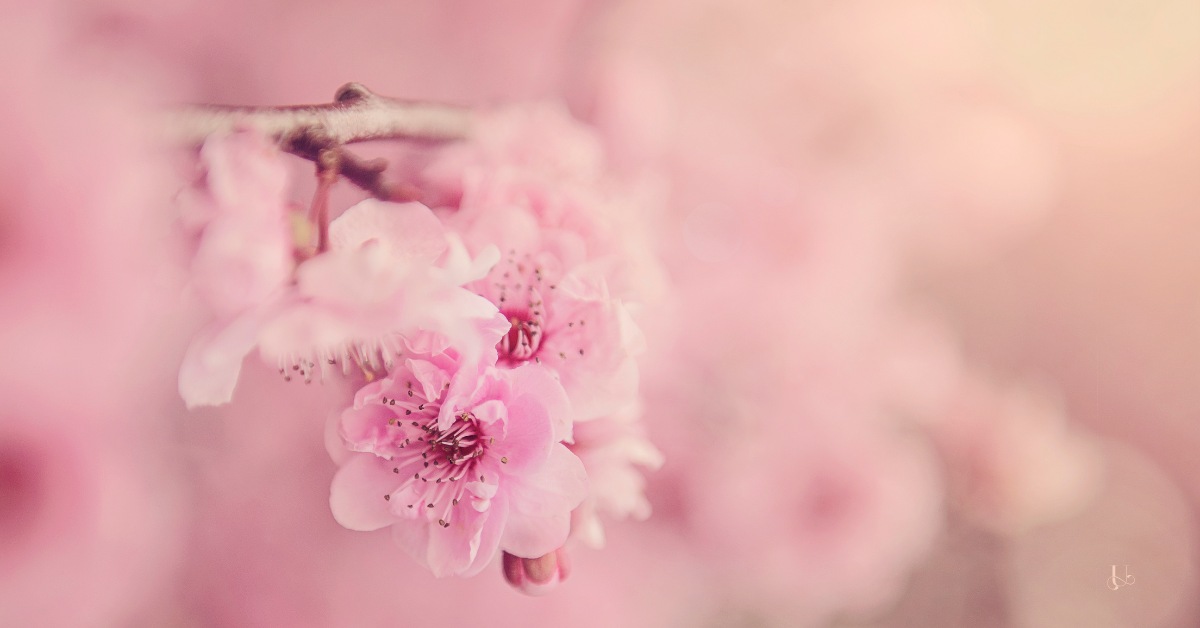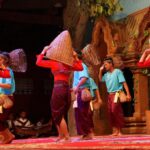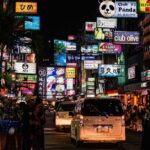Cherry blossoms are the delicate pink stars of hanami, a uniquely Japanese tradition that celebrates the coming of spring.
For the Japanese, it’s like a holiday season – the time of year spanning from late March through April when the cherry, plum, and peach blossoms flourish all over the country. That is when they practice ohanami, the beloved tradition of flower viewing.
What is Ohanami?
Ohanami, also called hanami less formally, comes from the kanji for flower, Hana, and the kanji for “looking” or “to see,” mi. It means exactly what it sounds like to look at flowers. Ohanami does not take place on a specific day but rather can be practiced at any time during the spring window.
Also Read
花見
はな・み
hana・mi
flower viewing
The tradition is one of simply observing and appreciating the delicacies of spring – particularly sakura, ume, and momo blossoms (cherry, plum, and peach, respectively) – and reveling in that which is made even more beautiful, more precious by its evanescence. For the Japanese, the transience of cherry blossoms is a powerful metaphor for life.
What to do at Ohanami?
Ohanami is a tradition enjoyed among friends, families, couples and coworkers alike. It can be a picnic in the park, eating sweets in the fields, visiting a famous castle or popular viewing site, or a couple casual beers on the hillside. If it happens under cherry blossoms it is probably ohanami.
Celebrating at festivals and organized events often means live performances and music, as well as innumerable stalls with games for children and a plethora of traditional Japanese foods and sweets to choose from.
Often offered at hanami festivals are sakura ice cream and sakura mochi. Likewise, stores put out a whole string of cherry blossom products, including sakura-themed candies, pastries, wine, and beer. Even Starbucks in Japan features a specialty sakura latte during the hanami season.
During hanami, adults often enjoy drinking alcohol, which can make the atmosphere lively, especially at night. The tradition of drinking sake during hanami dates back to ancient animism and beliefs, connecting the sakura (cherry blossoms) and sake through their shared syllable “sa.” This practice is symbolic of blessings and bountiful harvests brought by the Sagami god from the mountains.
What is the Best Time of the Year to See the Hanami?
The Hanami (cherry blossom) season in Japan is a stunning and diverse spectacle that spans approximately four months due to the country’s wide geographical range. The mesmerizing bloom of cherry blossoms begins as early as mid-January in the southern islands of Okinawa, offering a captivating sight that reaches its peak beauty around early February.
Continuing northward, the southern cities of Kagoshima, Kumamoto, and Fukuoka on Kyushu start to burst into bloom during the final week of March, showcasing a breathtaking display that reaches its climax in early April.
Transitioning to the Kansai region, encompassing cities such as Osaka, Kyoto, and Nara, the cherry blossoms come to life as March gives way to April, painting the landscape with their vibrant hues.
In the bustling metropolises of Tokyo and Yokohama, the onset of flowering typically occurs in the last few days of March, culminating in a spectacular full bloom in the initial week of April.
Venturing further north to Tohoku, the northern cities witness the arrival of cherry blossoms well into April, with Hirosaki on the northern tip of Honshu commencing its bloom and reaching its zenith in the final week of the month.
Lastly, the charm of cherry blossoms graces the northern island of Hokkaido, where the flowering usually commences in the first week of May in cities like Sapporo and Hakodate, with the peak bloom manifesting just a few days later.
A Brief History
Ohanami actually started as umami or plum blossom-viewing. That’s because back in the Nara period (710-784) – when flower-viewing was said to have first become a tradition – plum blossoms were gaining favor as symbols of culture and nobility.
Ume trees had been introduced to Japan by envoys returning from China, who’d been enamored with the Chinese spectacle of blossom observation and sought to impress Japanese nobles. By the Heian period (794-1185), hanami had become a regular practice among the higher classes and was observed by eating and drinking outside.
We also know from Lady Murasaki Shikibu’s Tale of Genji, a classic novel from the period, that by then, cherry blossoms had overtaken plum blossoms in terms of popularity and become the primary flower associated with the hanami tradition.
By the Edo period (1603-1867), the practice of finding a spot in the blossoming fields to enjoy sake and special bento had become a pastime for the common people.
Many plum blossom-themed poems appear in the Manyoshu, Japan’s oldest poetry anthology, and the fleeting beauty of both ume and sakura are recurring themes in classic Japanese literature. Along with singing, reading such poetry has become a common practice in today’s hanami celebrations.













